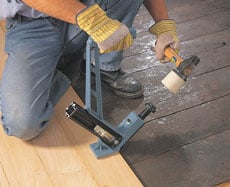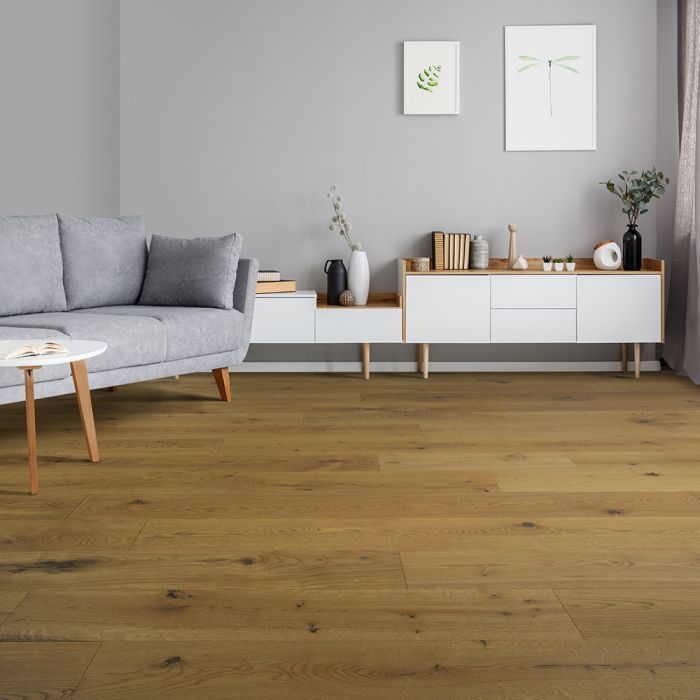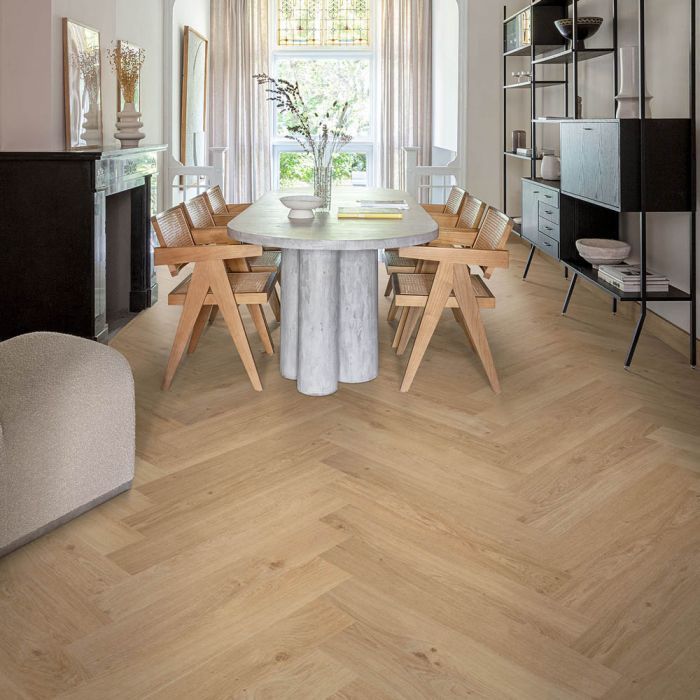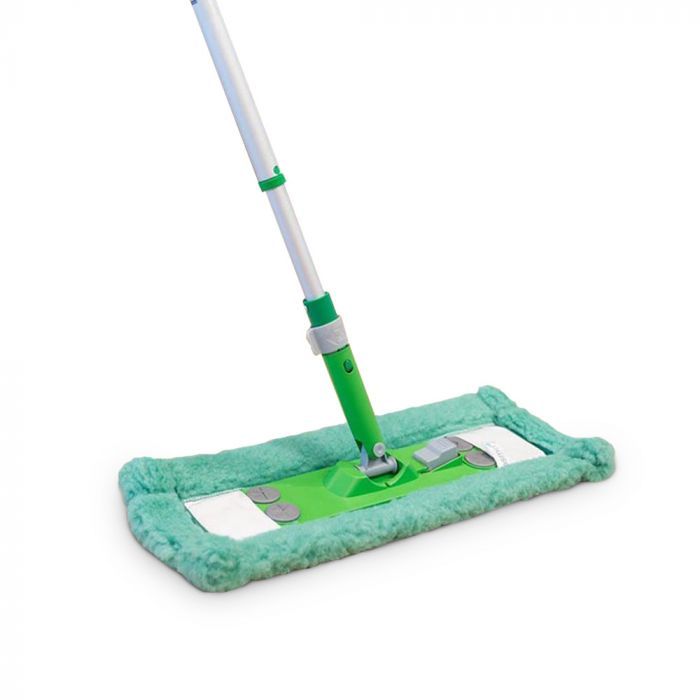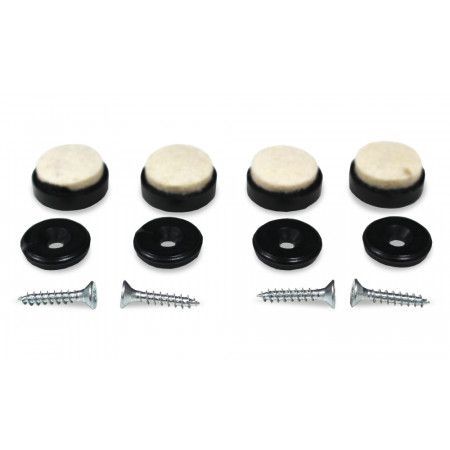Solid hardwood floors must be fixed into position by either gluing or nailing down to the subfloor. Engineered hardwood floors can be glued or nailed into position, but they also have the option of being floated over an underlay. If you choose to fix your hardwood floor into position, you then have the choice of either gluing your floor to the subfloor using flexible flooring adhesive to create a full surface bond, or you can secretly nail your floor directly to the subfloor.
Which method you choose, mainly depends upon your subfloor. If you have a concrete subfloor, then you should glue your hardwood down, if you have a wooden subfloor then you can choose either method of installation. However, if you are planning on fitting your hardwood floor to joists, then you will need to secret nail them into place.
When laying hardwood flooring in any way, it is always important to check that your subfloor is dry, level and flat, and leave an expansion gap of at least 12mm around the perimeter of the room. For further information on subfloors, see our article: ‘How to prepare my subfloor before installing hardwood’. And for more advice about expansion gaps, see: ‘What is an expansion gap?’
Gluing my hardwood floor down
To be able to glue your hardwood floor down the subfloor must be a solid and sound structure, for example, concrete or wooden floor boards. You should use flexible flooring adhesive to allow your flooring to expand and contract with natural changes in temperature and humidity. Always start with the longest wall in the room, ensuring you leave the correct expansion gap. Simply apply the adhesive to the subfloor with a notched trowel and spread across a small area at a time (approximately 1m²). Place the hardwood flooring planks on top of the adhesive and push them together. There is no need to glue the planks together as they are fully bonded to the subfloor. Flooring straps can also be used to hold the boards into place to ensure they do not move around while the glue is drying.
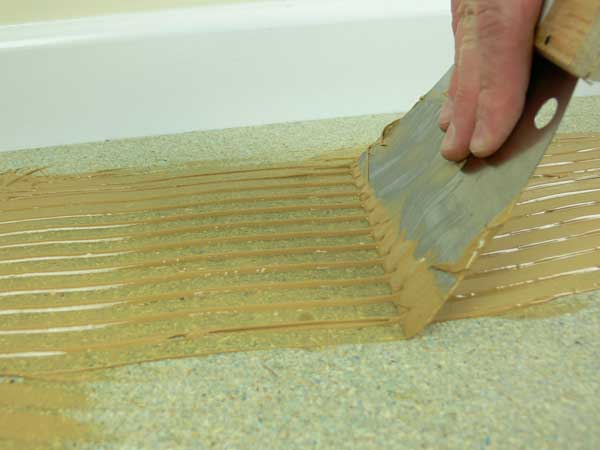
Secret nailing my hardwood floor down
Secret nailing down your hardwood floor is ideal if you have a wooden subfloor (plywood, wooden floor boards or joists), but it is not a suitable method of installation if you have chipboard or a concrete subfloor. In order to nail your hardwood floor down, it must be at least 18mm thick, and you should run the planks of flooring perpendicular to any existing floor boards. Always make sure you are using the correct equipment. A Portanailer gun is specifically designed to use flat nails that have teeth on either side to ensure the wood cannot come loose when your floor will naturally expand and contract over time. Using a nail gun is quite straightforward; simply position it over the edge of the plank where the tongue is found and use a mallet to push the nail in at a 45 degree angle. This will ensure that the nail is completely hidden from view and will securely attach your flooring to the subfloor.
